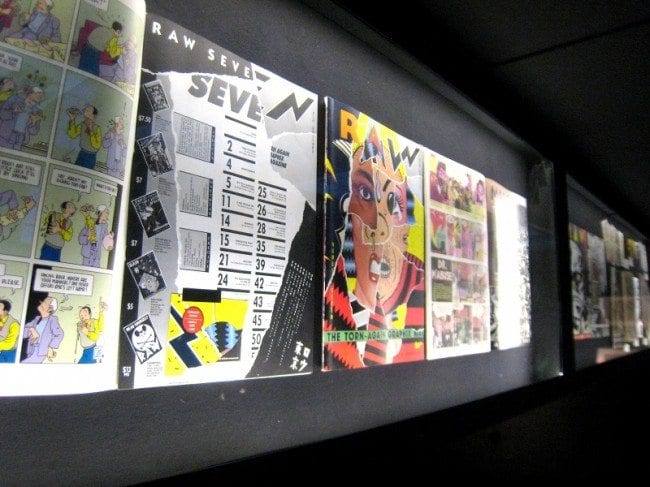
It's cold, but sunny in Angoulême. Friday was uncrowded, making it pleasant to cruise the exhibitor's tents. It hasn't been a banner year for new comics in French-speaking Europe, but there's still plenty of work to peruse at the alternative booths, with new books by Aurélie William Leveaux, Isabelle Pralong, Brecht Evens, Olivier Schrauwen, and Alex Barbier having caught the eyes of this visitor as particularly exciting.
Having spent most of my time in the tents in order to avoid the crowds tomorrow, I have yet to visit most of the exhibitions, but let me say this immediately: the Spiegelman retrospective in the Castro building is amazing. Everything you could wish for is there, most of it in the original: a sampling of early East Village Other strips, a generous selection from Breakdowns, including original pages from all the classics: "Malpractice Suite", "Ace Hole", "Don't Get Around Much Anymore", "Prisoner on Hell Planet", etc., as well as the original "Maus" short story and several of the iconic auxiliary illustrations to that work.

Another wall presents an eye-opening selection of the greeting cards and Garbage Pail Kids collector's cards that secured him his daily bread as a young cartoonist -- a little-seen but essential part of his oeuvre. Two other walls are dedicated to RAW Magazine, the seminal anthology Spiegelman edited with his wife Francoise through the eighties. The preparatory stages of the collage cover of issue 7 are exhibited along one wall, uniting several of the key contributors to the anthology, while another presents their work on video screens in front of a display case with the entire run of issues.
Photostats of the entirety of Maus are mounted in a separate room, accompanied by sketches, reference material, and other items helping elucidate Spiegelman's work process on his masterpiece without impeding the visitor's reading experience. A separate display case holds the original photo of Spiegelman's lost brother Richeu, reproduced in the book, his father Vladek's immigration form, and a photograph of little Art and his mother Anja in front of their home in Rego Park. There is something incredibly touching about these objects, which bring the crushing reality of the story told in the comics pages home with simplicity.

The rest of the show is devoted to Spiegelman's generally over-conceived post-Maus work, which pales in comparison. With the exception of his great comics essays -- on Sendak, Schulz, Kurtzman, and others -- and his charming children's books, his mature line is clunky, his cleverness running away with his focus, resulting is work that is at best earnest but messy ("The Portrait of the Artist as a Young %@?*!") or inspired but inarticulate (most of the New Yorker covers), and hermetically postmodern and didactic at worst ("In the Shadow of No Towers").
But this matters less when the body of the work as a whole shows such intelligence, curiosity, and ambition, something this show makes beautifully apparent.






